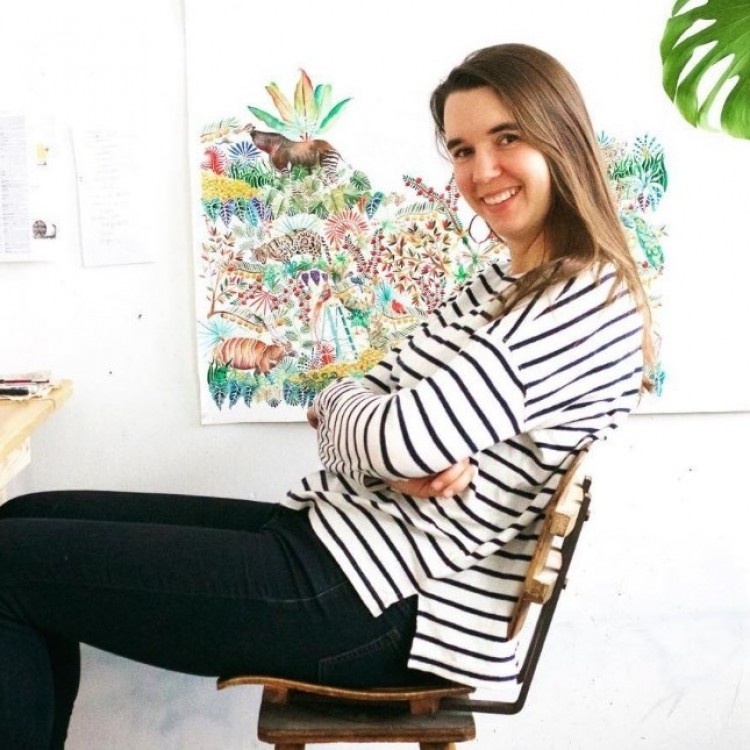
Robin Crofut-Brittingham’s practice primarily consists of large-scale works on paper that explore the complex relationship between humans and the natural world, with a particular emphasis on themes of overconsumption and environmental degradation. Her paintings envision a future where humans and nature coexist in a fragile yet harmonious balance, drawing from mythology, speculative fiction, and current events to construct intricate worlds and imagine alternative futures. The detail and scale of her pieces are intended to draw viewers in, encouraging them to engage with the minutiae that compose the natural world. Through her work, she aims to inspire contemplation of the tension between human expansion and the natural forces that are often overlooked or exploited.
Her latest body of work builds upon these themes while drawing inspiration from flood myths that appear across cultures—from the biblical story of Noah to the Mesopotamian epic of Gilgamesh. She is particularly interested in the dual nature of the mythical flood, which serves both as a destructive force and as a moment of renewal and rebirth. In this series, the flood is not merely a catastrophic event but also a cleansing and regenerative force—a return to balance or a divine intervention in response to human corruption. It symbolizes the potential for transformation and rebirth following environmental collapse, offering a speculative vision of a future where humanity is no longer dominant and those who remain have become an integral part of the natural world.
Crofut-Brittingham incorporates arched frames that echo the form of terrariums or enclosed ecosystems. These frames, like the landscapes within them, function both as boundaries and as self-contained spaces, suggesting the tension between containment and the potential for growth. Much like the mythological flood, they symbolize a fragile equilibrium—an environment that is nurtured yet delicately held in place. The works within these frames are enclosed, yet they suggest the possibility of transformation, renewal, and coexistence, reflecting themes of regeneration and the reemergence of nature in the aftermath of collapse.
Her latest body of work builds upon these themes while drawing inspiration from flood myths that appear across cultures—from the biblical story of Noah to the Mesopotamian epic of Gilgamesh. She is particularly interested in the dual nature of the mythical flood, which serves both as a destructive force and as a moment of renewal and rebirth. In this series, the flood is not merely a catastrophic event but also a cleansing and regenerative force—a return to balance or a divine intervention in response to human corruption. It symbolizes the potential for transformation and rebirth following environmental collapse, offering a speculative vision of a future where humanity is no longer dominant and those who remain have become an integral part of the natural world.
Crofut-Brittingham incorporates arched frames that echo the form of terrariums or enclosed ecosystems. These frames, like the landscapes within them, function both as boundaries and as self-contained spaces, suggesting the tension between containment and the potential for growth. Much like the mythological flood, they symbolize a fragile equilibrium—an environment that is nurtured yet delicately held in place. The works within these frames are enclosed, yet they suggest the possibility of transformation, renewal, and coexistence, reflecting themes of regeneration and the reemergence of nature in the aftermath of collapse.